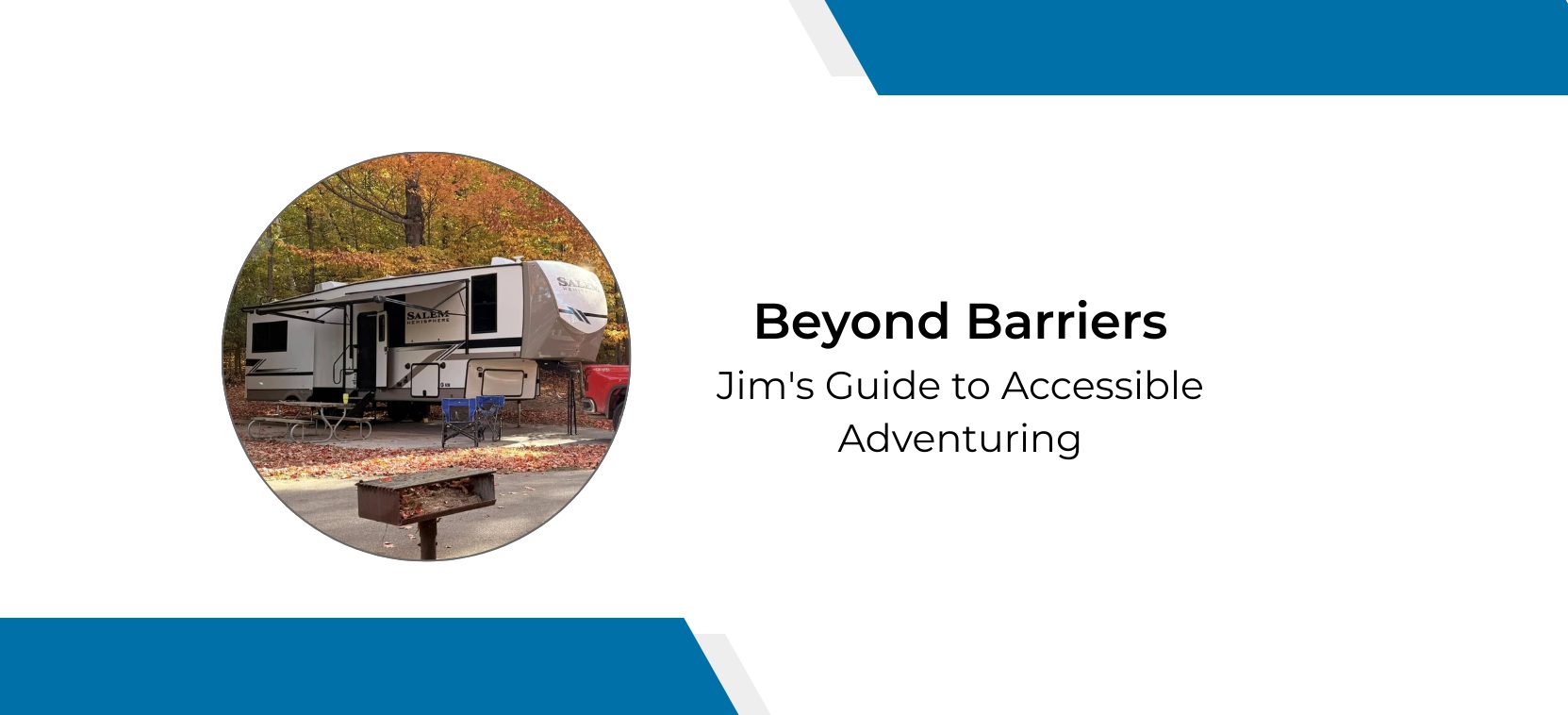Posted on Friday August 1, 2025

Spending time in the great outdoors is a beloved pastime for many across the U.S. But for those with accessibility and mobility challenges, traveling can present significant hurdles.
However, Jim Nagel, a longtime Amigo customer and a lover of travel and the outdoors, said it is still possible. With careful research and a solid plan, he’s confident that anyone can make outdoor adventures a reality.
“You have to do your research; there is no doubt about that,” Jim said.
He said there’s no easy way around the planning; you have to do the research yourself. But he shared some tips he uses to make the most of his outdoor adventures:
- Use trusted websites: Check location, travel, and camping reservation sites like recreation.gov, state DNR sites, and county websites to find places to stay.
- Get the Access Pass: The National Parks and Federal Recreational Lands Access Pass saves you money at places like National Parks. To qualify, you must be a U.S. citizen/permanent resident with a permanent disability.
- Look at the photos on reservation sites: Photos often reveal more about accessibility than written descriptions. If you are camping, look for sites with hard-packed ground and paved roads and trails. AbleVu.com can be a great resource for this.
- Call ahead: Wherever you’re staying, call to ask about specific accessibility features to avoid surprises.
- Plan accessible activities: Research nearby events and attractions to ensure they are accessible to individuals with mobility devices and other accessibility needs.
- Stay close to your adventure: Choose lodging that’s near your planned activities to limit unnecessary travel.
- Prep your vehicle: Make sure your vehicle is in good condition and outfitted for your needs.
Jim’s favorite places to camp are at U.S. Army Corps of Engineers campgrounds and federal campgrounds. He also recommends checking out other campgrounds while you’re on the road; sometimes, you can find a campsite that better suits your needs by taking a quick detour. Jim always asks permission first, and said he’s never been turned down.
While Jim’s experiences are mostly positive, he acknowledged that not every moment has been easy. He said his only truly bad experiences were caused by other campers’ actions and ignorance.
“Thankfully, I have found that the vast majority of people really care. I truly believe that the good outweighs the bad in people,” he said.
Jim also said more needs to be done to support accessible tourism, like better information, dedicated programs, and funding. Still, he encourages others not to let these barriers stop them.
“My main advice to people with mobility issues is: where there is a will, there is a way that you can enjoy the outdoors,” he said. “I do not let my life be defined by my mobility issues. I work with or around them to live my life to the fullest.”
Through careful planning and firsthand experience, Jim has created a way to enjoy the outdoors that works for him. He hopes that by sharing what he’s learned, others facing similar challenges might feel more prepared and empowered to do the same.
Tips for Your Travels
Jim shared some valuable information about what he does to make the most out of his outdoor adventures. With Jim’s help, we’ve put together tips to make your travels more enjoyable:
- Bring an extension cord in case an outlet isn’t nearby to charge your Amigo.
- Just as you would at home, charge your Amigo daily.
- Keep your Amigo out of direct sunlight when possible to protect the seat and controls.
- If rain is in the forecast, store your Amigo under shelter or use a waterproof cover. We recommend using Diestco covers. The company doesn’t sell directly to the public, but its website has an option to find a dealer near you.
- Stick to solid ground; loose sand, deep gravel, or mud can be tough on the wheels.
- If your Amigo gets dirty, do not hose it down. Just wipe it off with a damp cloth.
- Consider purchasing battery-powered or USB rechargeable fans to help you stay comfortable in the heat.
- If you do any outdoor cooking, consider getting a taller fire brick to help you reach into a skillet/Dutch oven/etc.



































